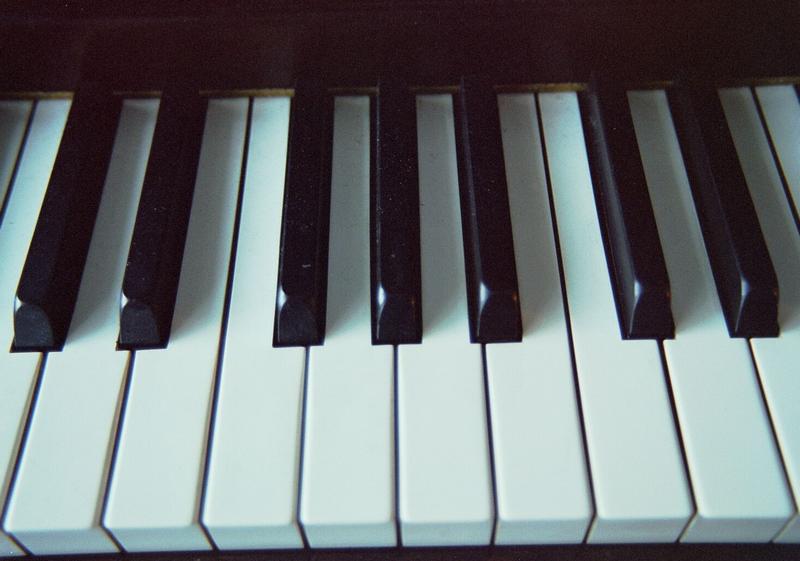The basic definitions of diatonic vs chromatic are pretty easy to understand, but like most music theory lingo, it sounds scarier than it is! The diatonic and chromatic scales together actually form the foundation for most of western music. Let’s explore.
What is a chromatic scale?
In western music, there are twelve available pitches from A to G. Every note except B and E has a sharp after it, e.g., A#, C#, D#, etc. The chromatic scale is the complete set of 12 notes played in sequence with half steps (also called semitones) between each note. If you played the chromatic scale on a piano starting on C, it would look like this:
- C – C# – D – D# – E – F – F# – G – G# – A – A# – B
By definition, there is only one chromatic scale. It may start on any tonic (root note), but must ascend or descend all 12 pitches in semitone increments. The majority of western music utilizes some sort of subset of the chromatic scale, most frequently being a diatonic scale.
What is a diatonic scale?
A diatonic scale is a 7-note scale containing 5 whole steps and 2 half steps. To be considered diatonic, each half step in the scale must also be separated by at least two whole steps. Any sequence of 7 natural notes on a piano, such as F to F, G to G, B to B, etc. is diatonic. That is to say, if you played any 7 white keys in sequence, it would be diatonic by definition.
The two most common diatonic scales in music are the major and natural minor scale. You may also be familiar with the harmonic and melodic minor scales, which do not meet the criteria for a diatonic scale (all of their half steps are not separated by at least two whole steps).
To summarize diatonic vs chromatic, the latter contains all 12 notes in western music separated by semitones. The former subdivides the chromatic scale into 7-note chunks of 5 whole steps and 2 half steps.
Major Scale
The major scale arranges the whole and half steps of a diatonic scale in a particular order to give it its tonality. That order is as follows:
- Whole – Whole – Half – Whole – Whole – Whole – Half
Choosing any starting note on a piano and playing this sequence will give you a major scale. We mentioned earlier that any sequence of 7 natural notes (white keys) is diatonic, which is true; but transposing the major scales to various keys will introduce accidentals (sharp/flat notes, e.g., black keys) into the scale. It is still diatonic. This has more to do with how white keys are arranged on a keyboard than the definition of diatonic.
Natural Minor Scale
Just like the major scale, the natural minor scale is diatonic, and achieves its tonality based on where the 2 half steps are in relation to the 5 whole steps. Its order is as follows:
- Whole – Half – Whole – Whole – Half – Whole – Whole
In music theory, the natural minor scale is derived from the major scale. Sometimes we call this the relative minor to a specific major key. That’s because the minor scale begins on the sixth degree of the major scale. This is most easily exemplified using C major and A minor, which contain all natural notes. A is the sixth note in C major; starting on A and playing the rest of the notes in C major actually gives you the relative A natural minor scale.
Diatonic Modes
In addition to the natural minor scale, 5 other scales are derivatives of the major scale. Each simply chooses a different note as its starting point. These are called modes, and each of the 7 modes (major and minor included) are diatonic scales. We’ll name each mode and use C major as a reference for the starting note for the different modes.
- Ionian (aka, the major scale) — starting note: C
- Dorian — D
- Phrygian — E
- Lydian — F
- Mixolydian — G
- Aeolian (aka, the natural minor scale — A
- Locrian — B
Starting with the major scale, each of the 6 additional scales is a derivative of it. All of them are also diatonic scales.
What are diatonic chords?
Diatonic chords are simply defined as those that exist within a given key. That is, chords built from the existing notes in a key. The most common of these are triads, or 1-3-5 chords, where 1-3-5 represent scale degrees. A C major triad, for instance, contains the notes C-E-G; C is the 1, E is the 3, and G is the 5. An A minor triad contains the notes A-C-E.
Conclusion: Diatonic vs Chromatic
Diatonic vs chromatic is not as complex as it sounds. The chromatic scale is really just all 12 notes. It isn’t very musical on its own, which is why diatonic scales derived from the chromatic scale are what we use to make music. If you just remember that a diatonic scale is 7 notes with 5 whole steps and 2 half steps, you’re good to go. How those steps are sequenced give diatonic scales their individual tonality (and names!).
